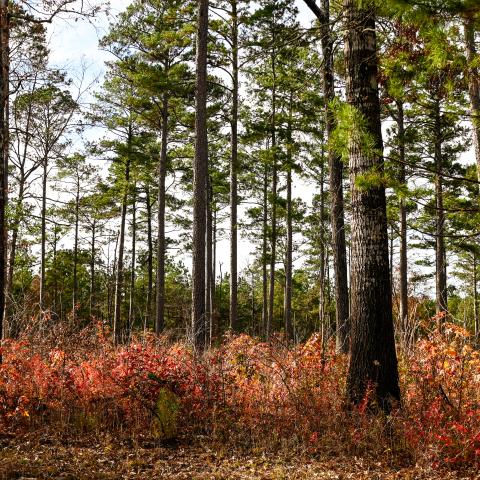
Press Release

Both domestic and wild animals are a critical component of ecosystems and our environment. Domesticated animals, such as livestock, provide us with food and fiber, while wildlife support healthy ecosystems.
NRCS offers technical and financial assistance to help producers improve their livestock operations as well as manage for wildlife habitat, depending on their natural resource and business goals.
Livestock practices help reduce soil erosion, promote forage growth, improve water quality and help provide water, and others. Meanwhile, wildlife practices enable farmers and ranchers to integrate wildlife habitat into working lands while also improving the quality of habitat in forests and other landscapes.
Additional Conservation at Work videos and conservation practice standards are available. If you’re interested in assistance with these practices, contact your local NRCS office. You can also explore further with the Conservation Concerns Tool on farmers.gov.

This initiative was developed as a coordinated effort to identify priority issues, find solutions, and effect change on private grazing land, enhancing existing conservation programs.

Working Lands for Wildlife brings together partners and agricultural producers to help manage land for wildlife and agriculture.
Do you farm or ranch and want to make improvements to the land that you own or lease?
Natural Resources Conservation Service offers technical and financial assistance to help farmers, ranchers and forest landowners.

To get started with NRCS, we recommend you stop by your local NRCS field office. We’ll discuss your vision for your land.
NRCS provides landowners with free technical assistance, or advice, for their land. Common technical assistance includes: resource assessment, practice design and resource monitoring. Your conservation planner will help you determine if financial assistance is right for you.
We’ll walk you through the application process. To get started on applying for financial assistance, we’ll work with you:
Once complete, we’ll work with you on the application, or CPA 1200.
Applications for most programs are accepted on a continuous basis, but they’re considered for funding in different ranking periods. Be sure to ask your local NRCS district conservationist about the deadline for the ranking period to ensure you turn in your application in time.
As part of the application process, we’ll check to see if you are eligible. To do this, you’ll need to bring:
If you don’t have a farm number, you can get one from USDA’s Farm Service Agency. Typically, the local FSA office is located in the same building as the local NRCS office. You only need a farm number if you’re interested in financial assistance.
NRCS will take a look at the applications and rank them according to local resource concerns, the amount of conservation benefits the work will provide and the needs of applicants. View Application Ranking Dates by State.
If you’re selected, you can choose whether to sign the contract for the work to be done.
Once you sign the contract, you’ll be provided standards and specifications for completing the practice or practices, and then you will have a specified amount of time to implement. Once the work is implemented and inspected, you’ll be paid the rate of compensation for the work if it meets NRCS standards and specifications.